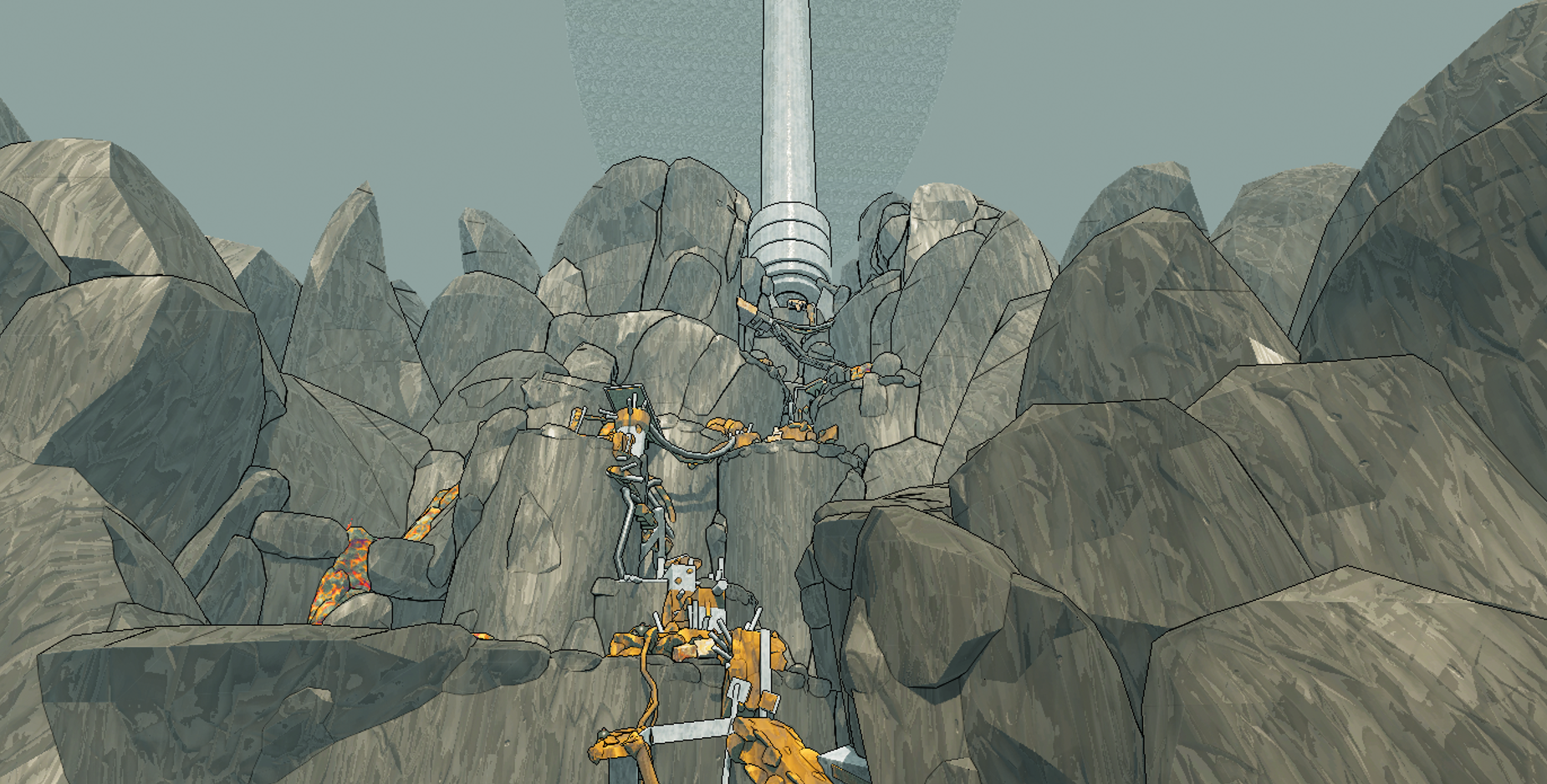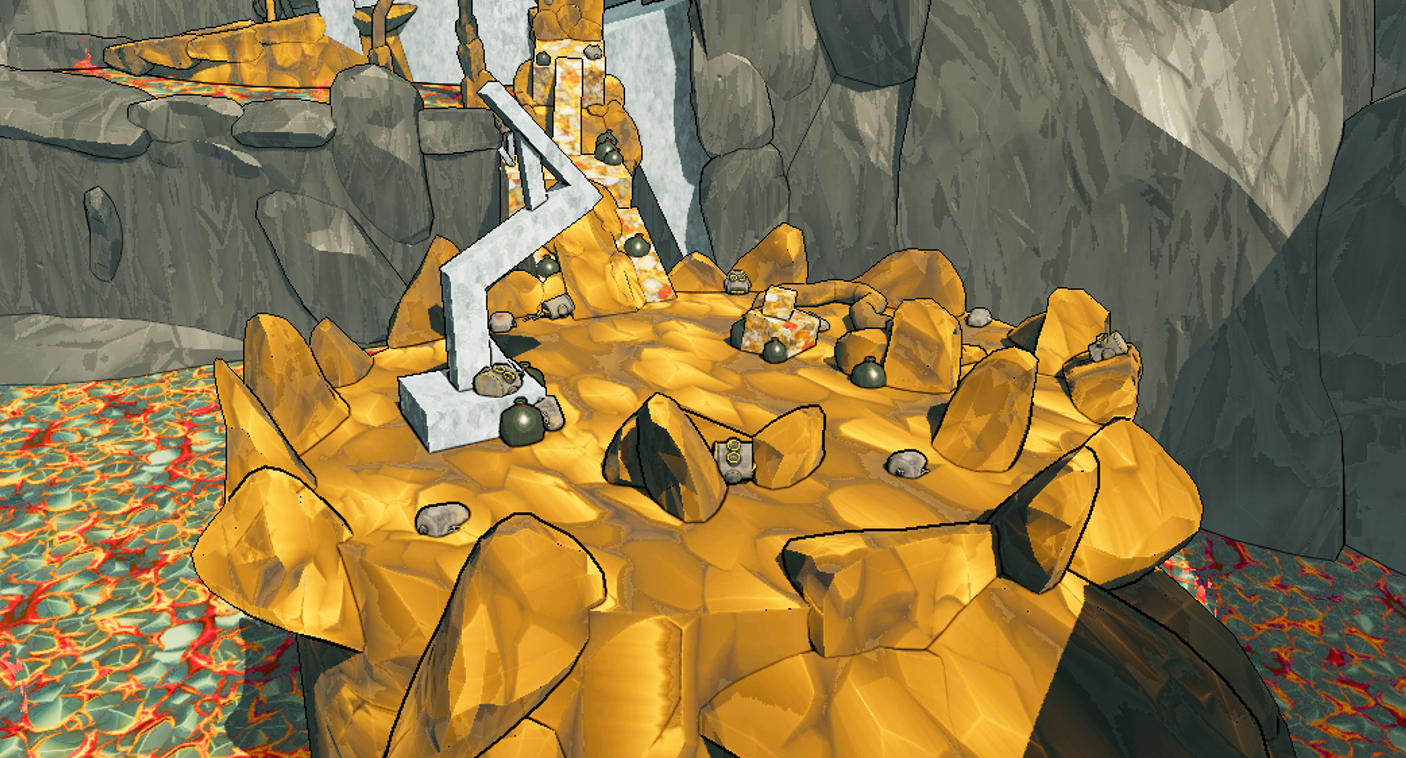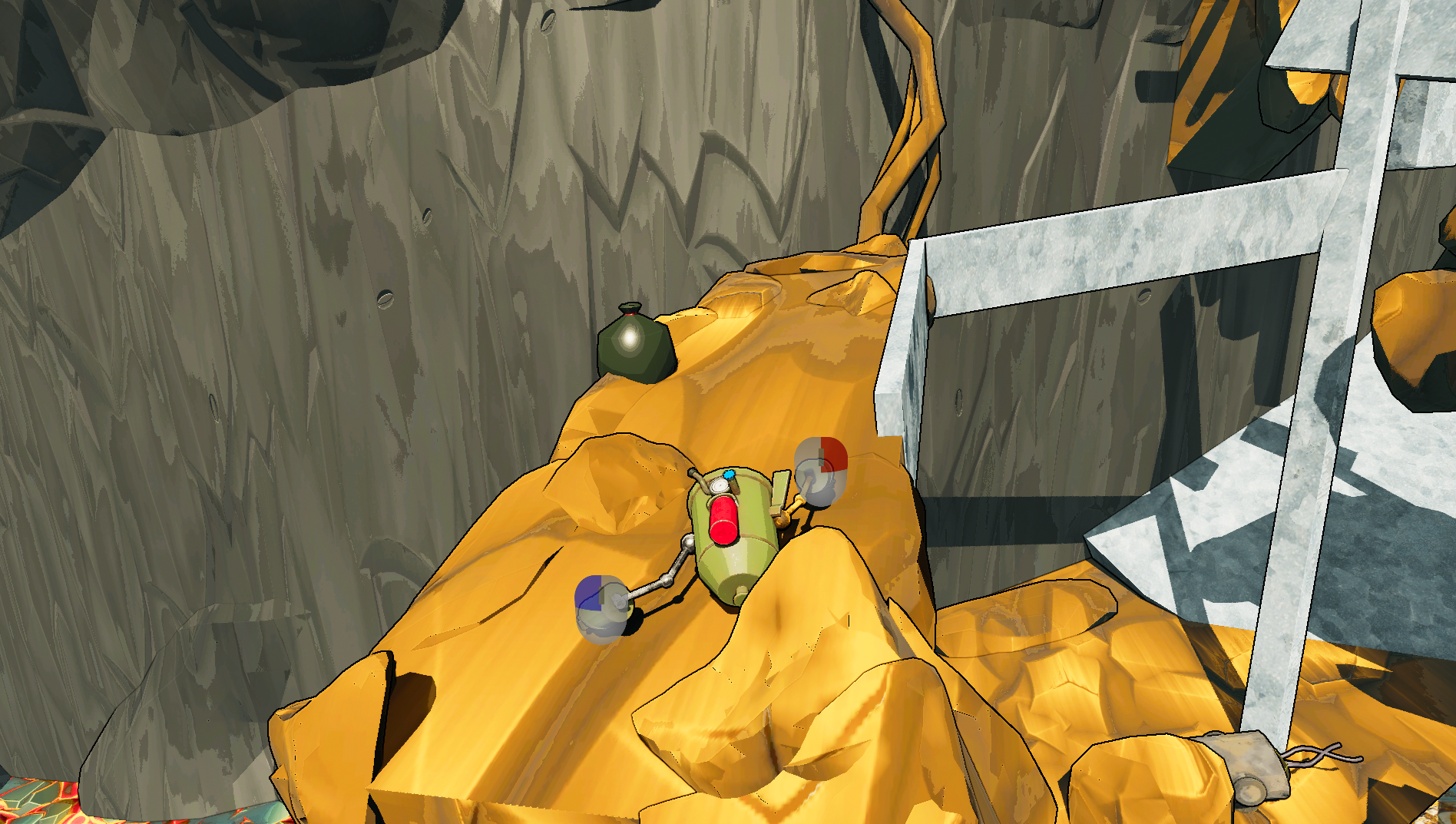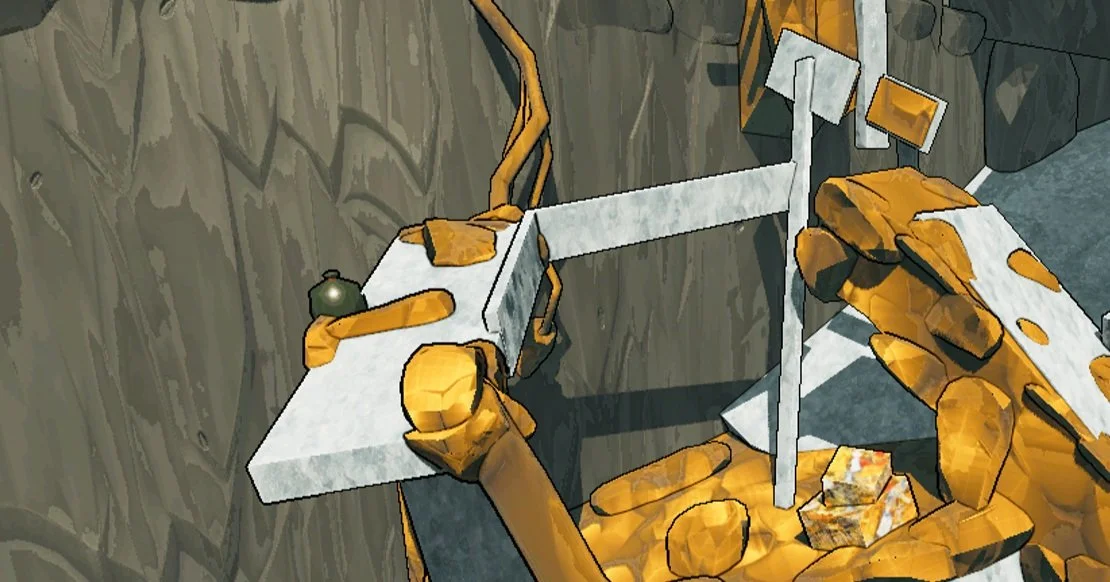
Get A grip
Level designer | TinyBot
Summary
GET A GRIP is a physics-based climbing game where players take on the role of a once-advanced robot, now damaged and stranded in a colossal robot graveyard. With limited functionality, scale the treacherous mountain of scrap through the use of interchangeable arms found scattered across the metallic wasteland. Reach the peak or rust forever.
The above paragraph is our high concept for our submission to the 2024 Game Makers Toolkit (GMTK) game jam. With four days to create a game with the Built to Scale theme, our team interpreted the prompt as climbing, ie: scaling. We decided to make the character a robot with interchangeable arms to fit the ‘built to’ part of the prompt, essentially having players build their robot to scale a mountain!
Project Information
Team Size | 5
Engine | Unreal Engine 5
Duration | 4 days
Game Jam | GMTK 2024 Game Jam
Jam Theme | Built To Scale





Experience
As a level designer on this project I was responsible for creating the mountainous level the player will climb up. This process involved defining metrics, creating a blockout, iterating on the level, and set dressing it. I also created some game features like the checkpoints and falling debris, but most of my effort during the game jam was level focused.
When creating the level blockout I had to consider many variables, as our core gameplay loop was going to involve the player finding and equipping different arms that have different functionality. We wanted the player to use whatever arms they preferred as they went up the mountain, so this meant the level had to account for multiple potential player arm loadouts at once. It was a great challenge to create a level that did so while still challenging the player, no matter the loadout they choose to approach a section with.
I also created some gameplay features that I would use in the level, such as falling debris and checkpoints. As was I creating the level both of these features were things that would greatly improve the player experience, so I decided to tackle implementation myself!
As I created the level and the occasional feature, I was in constant communication with my teammates, primarily gathering feedback, discussing the intended player experience, and working out any design concerns we encountered. The team was a highlight of this game jam for me as we worked super well together!
Impact
When deciding roles for this game jam I immediately jumped on the level design role, as it had been a while since I was a dedicated level designer on a project. Also the opportunity to create a level for such a unique player movement system was a great learning opportunity. Creating a golden path that is possible with all the different potential loadouts forced me to take multiple variables into account while still making the level engaging and fluid. It was challenging, and I found myself tweaking the level constantly as I tested different loadouts or observed others play through it.
Also getting involved with the game dev community through such a massive game jam is always a good time. I played dozens of games submitted to the jam by other developers and had such an amazing time seeing others play through our game. It made me want to participate in more game jams more often, and I plan on doing so!
Design Process | The mountain
Intended gameplay experience
The intended gameplay experience we’re striving to achieve will dictate the layout of the level that I needed to create for the game.
As a team, we wanted to create a movement system that was challenging, and even frustrating, making traversing the environment the primary challenge for the player. Mastery of movement should also be highly rewarded, as it will be the primary method of skill expression for the player. Creating a level that challenged and rewarded the player in this regard is extremely important.
Also we want to encourage player choice. Giving them different attachments throughout the level that are better or worse at traversing different terrain, and giving the player different optional paths in the level to reach the summit will increase traversal agency. This will make it so each player can strategize and plan as they ascend, making their experience more engaging and memorable.
Guiding the player
In the level the player is naturally drawn to climbable surfaces, which we intentionally designed to be visually distinct. These surfaces will determine the golden path towards the summit, which will guide the player naturally.
In the level I utilize leading lines and framing to also subconsciously guide the player forward, such as metal poles or spline meshes that point towards the golden path.
Pickups are also used to guide the player forward, while also confirming their progression. Checkpoints also are handy for progression, as they will display the name of the new location when the player reaches it, communicating progress to the player.
Lastly, landmarks are used to guide the player. The final goal of the player is to reach the summit, which is visible at nearly all times due to the massive landmark at the top of the mountain. Along the level there are also unique landmarks that other areas don’t have, specifically with the map geometry. One area has a climbable tower with pipes coming out of it, while another has a canyon with rocks falling down, and another has a thin bridge made of rock and metal. These landmarks orient and guide the player forward, and ensure they never get lost.
teaching the player
The beginning area is a safe space for the player to learn the basics of the movement, and as they move through the area they will learn the flow of alternating between each arm, how to climb on walls, slopes and other geometry, and what surfaces they can grab.
When introducing new gameplay mechanics, which were found as ‘arm’ pickups in the level, I made sure to introduce it in a safe space for the player to test it out and get accustomed to it before there is too much risk.
The arm pickups had clear UI that made equipping the arms intuitive. Players would often equip a new arm immediately when finding one, and the act of equipping to a specific side would be picked up quickly in most circumstances.
problem establishing the material language (Suction cup ability)
The suction cup ability (found at the end of the tutorial section) can grab onto metal surfaces and can’t grab rock, whereas the default claw can grab rock and can’t grab metal. We ran into problems after the game was submitted where players wouldn’t know what the suction cup ability did when they picked it up. They would often get frustrated using it before learning it’s functionality after lots of experimentation, or in some cases ditch the ability entirely and try to complete the level without it.
The reason the player found the suction cup confusing is because they never found themselves in a situation where they attempted to grab metal surfaces before obtaining the suction cup. The core surface language of the game wasn’t established well enough in the initial tutorial, and players often thought the claw could grab everything. So when they got the suction cup they didn’t understand why it couldn’t grab rock, therefore thinking it was useless, or getting confused when it could grab some things but not everything.
The solution? Adding areas before the suction cup pickup involving metal surfaces, teaching the player that they cannot grab that surface with the regular claw. This change will make players realize the utility of the suction cup instantly when they try it out and it sticks to a previously un-grabbable surface. Another improvement was adding more metallic surfaces around the immediate pickup location of the suction cup, increasing the grabbable areas for the ability when equipped.






